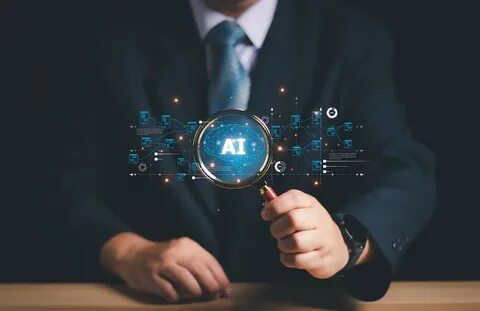Post Preview
Key Takeaways:
- Importance of authenticity in academic research.
- How AI detection tools help maintain integrity.
- Challenges and prospects of AI detection in academia.
The Vital Role of Authenticity in Academic Research
Academic research is the cornerstone of intellectual development, driving innovations and insights across disciplines. The reliability of this vast body of work is fundamentally tied to its authenticity. Research lacking authenticity can lead to misguided conclusions, affecting subsequent studies and professional applications. Therefore, maintaining the highest standards of integrity is not just a preference but a necessity in scholarly circles.
Despite awareness, the field is not immune to issues of misconduct. Incidents of plagiarism and data manipulation occasionally taint academia’s reputation, underscoring the need for vigilant oversight. Innovative solutions such as AI detection tools have become crucial in addressing these challenges. An AI detector tool is an example of technology making it increasingly feasible to pinpoint authenticity breaches before they taint an entire body of work.
How AI Detection Tools Work in Safeguarding Research
AI detection tools utilize sophisticated algorithms to streamline the identification of duplicate content. These tools scour massive databases, comparing new submissions against an extensive backdrop of published literature. They flag potential issues for further evaluation by highlighting similarities with existing works. A report by MIT Technology Review elaborates on how AI is invaluable in detecting duplicated content and securing the integrity of academic endeavors.
In operation, these tools do not merely match text verbatim but also look for patterns indicative of unoriginal thought. This ability is crucial in evaluating paraphrased sections that might fly under the radar of traditional checks. Such precision empowers researchers and educators by seamlessly integrating originality checks into the research process, ensuring a more foolproof approach to maintaining scholarly standards.
Academic Integrity: A Growing Challenge
As information becomes more accessible, the temptation to indulge in academic shortcuts grows, making integrity in research a contemporary challenge. Academic dishonesty takes many forms, notably plagiarism, which threatens the genuine generation of knowledge. A study pointed out that up to 36% of students admitted to copying text from internet sources without appropriate citation, highlighting a gap in academic conduct that needs addressing.
The consequences of such behavior ripple outwards, affecting academic reputations, invalidating research findings, and ultimately eroding trust in scholarly publications. By wielding tools that reinforce originality, academic institutions are better positioned to counter these trends decisively.
Ensuring Authenticity with AI Detection Tools
In efforts to bolster the integrity of academic research, AI detection tools should be integrated into educational institutions’ everyday workflows. This integration not only normalizes the process of authenticity checks but also ensures that infractions are identified early. Educating faculty and students on effectively engaging with these tools further enhances their efficacy, promoting a culture of integrity.
Enriching academic curricula with components that focus on the ethical use of resources and appropriate citation practices also plays a vital role in curbing dishonesty. Regular workshops and seminars can be leveraged to update stakeholders on the latest tools and techniques, ensuring that they remain at the forefront of academic integrity.
Balancing Technology and Human Oversight
Even with advanced AI tools in place, the importance of human oversight cannot be overstated. AI tools, while effective, are not flawless. There are instances where legitimate work may be mistakenly flagged as plagiarized. Thus, human intervention remains critical in reviewing AI findings to discern legitimate concerns from false alerts. This necessity is emphasized in a Nature article discussing the value of maintaining human judgment alongside technological resources.
The partnership between humans and AI represents a powerful synergy. Educators and researchers bring nuanced understanding and context that AI lacks, allowing for a balanced and thorough examination of potential originality issues. Together, they foster an environment where vigilance and accuracy prevail.
Challenges Facing AI Detection in Academia
Despite their capabilities, AI detection tools face challenges, notably bias and reliability. These tools must be continually refined to minimize false positives and adjust to evolving writing styles. Privacy considerations also emerge as the deployment of AI necessitates access to large data sets, stirring ethical concerns related to data handling.
Efforts to enhance AI tools must balance technical efficacy and ethical compliance. Collaboration with data privacy experts can ensure protection measures align with broader societal values, ultimately reinforcing trust in the deployment of AI tools.
The Future of AI Detection in Academic Research
The horizon for AI detection in academia is wide and has potential advancements. Emerging technologies promise increased accuracy and sensitivity when evaluating the originality of complex works. Developing algorithms that better understand academic contexts could significantly reduce false alarms and improve detection precision.
This momentum anticipates an educational landscape where AI tools are supplementary and integral to the research process. As these tools mature, they could transform peer review systems, enhancing transparency and accountability across scholarly publications.
Perspectives from Academics and Researchers
Many in academia view AI detection tools as a critical layer in the quality assurance framework of research processes. Universities that have embraced these tools report noticeable improvements in the quality of submissions, with researchers demonstrating greater diligence in ensuring originality. These case studies provide compelling evidence for the widespread adoption and integration of AI technologies in academic environments.
Such advancements ensure that academic research remains a credible and respected pillar within the global knowledge ecosystem. By upholding high standards and continuous improvements, AI can foster new chapters in academic excellence.
Conclusion
AI detection tools have cemented their role in safeguarding the integrity of academic research. As academic dishonesty challenges grow, these tools provide a robust solution to ensure the authenticity that research demands. The future of AI in academia promises even more enhancements that will work in harmony with human expertise to uphold these standards, guiding academia toward greater accountability and sound scholarly contributions.

